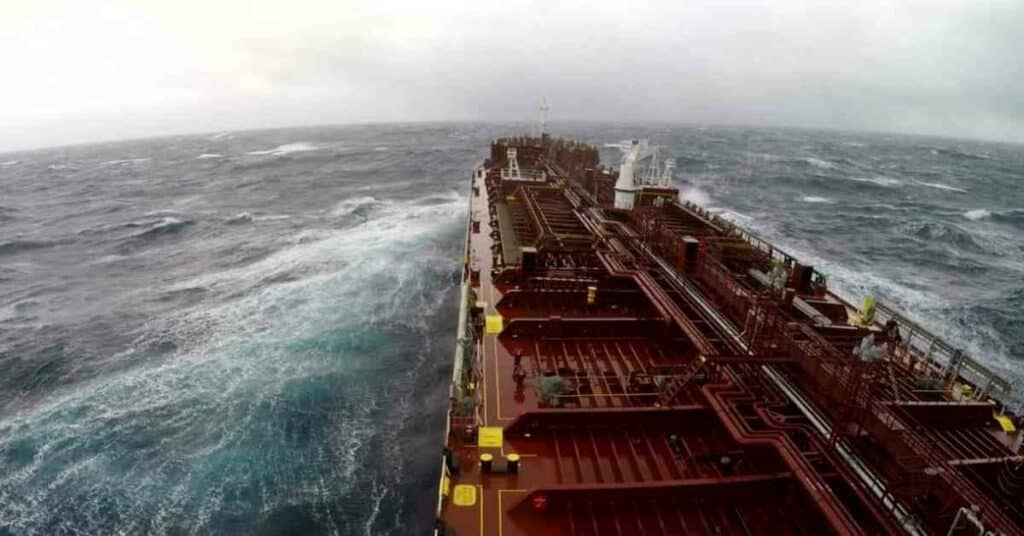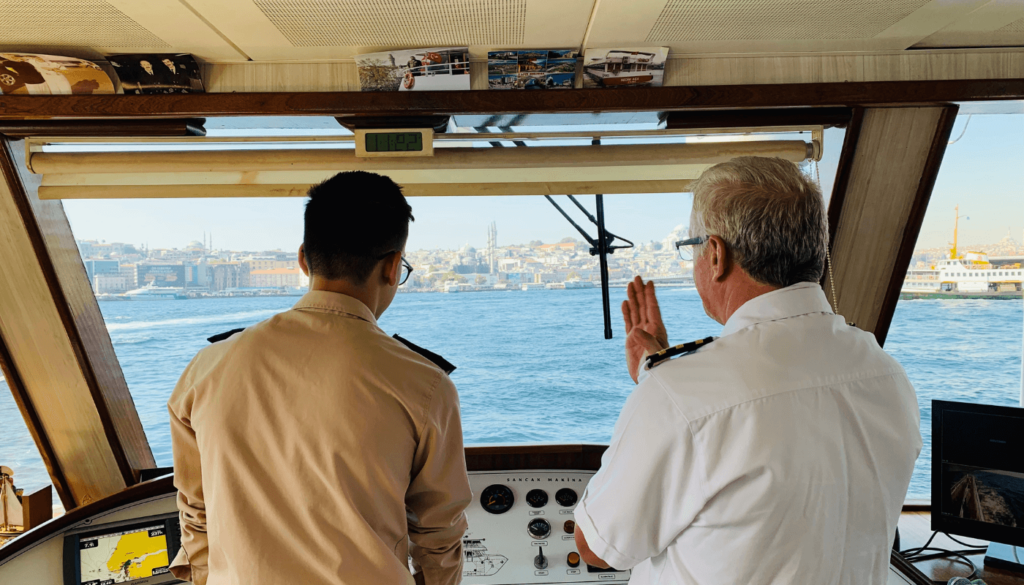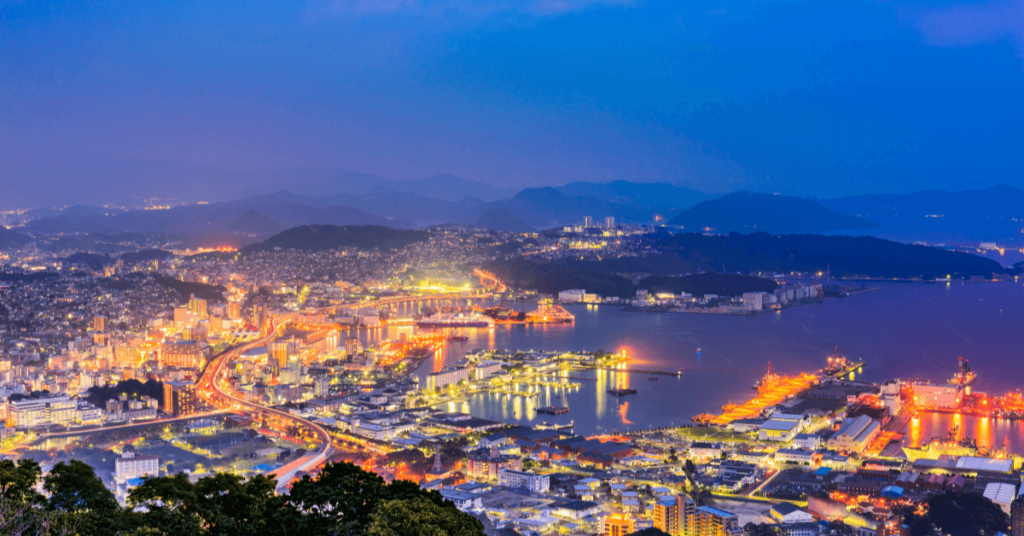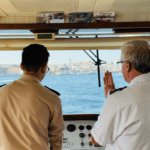10 Major Ports of Haiti
The Republic of Haiti, earlier called Hayti, is a nation on the Hispaniola Island in the Carribean Sea’s Greater Antilles Archipelago which lies close to Cuba, Jamaica, Bahamas and the Turks and Caicos Islands.
Haiti has everything that can attract tourists, such as white sandy beaches, beautiful landscapes, and a pleasant climate, yet its tourism sector suffers due to corruption and political instability.
Haiti is the world’s leading producer of vetiver, which is a root plant and the main ingredient of perfumes, fragrances and essential oils. It has a developed agricultural sector, too.
Given its position, it has several ports, but most operate below their optimum capacity and need repair and maintenance. However, the government can only do a little since it lacks funds. Unemployment is high in Haiti, and many, especially the young, migrate, if they can, in search of better opportunities elsewhere.
Let us look at the ten major Ports of Haiti in this article.
Port of Port-au-Prince
Port-au-Prince is the main seaport and the commercial hub of Haiti. It is positioned on the Gulf of Gonave, sheltered from the open sea waters and winds by La Gonave Island. The city and the port infrastructure suffered massive damage during the 2010 earthquake.
The container wharf nearly drowned, and a huge part of the southern pier was damaged in the catastrophe, though essential repairs were carried out.
Today, the port has facilities for handling RORO, containers, cruise ships and dry bulk carriers. However, in the past few years, the port has emphasised increasing the volume of passengers and cargo at the main facility. There was a finger pier used by the cruise ships; however, it was destroyed by Hurricane George.
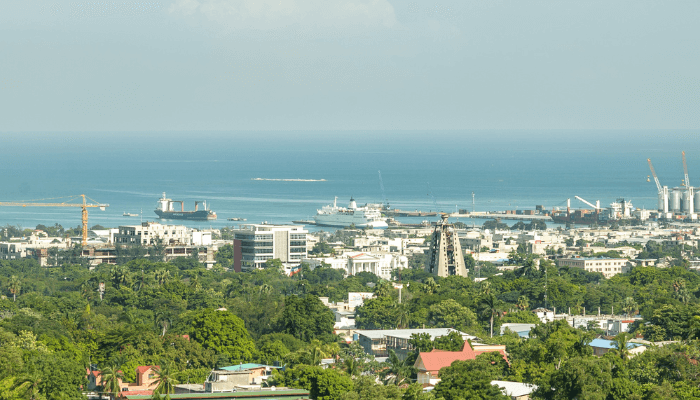
Varreux, the tanker terminal receives emergency repairs to pipelines, tanks, and jetty to allow the resumption of imports before the prior supplies of diesel, propane, gasoline and fuel oil run out.
Major exports include fruits, coffee, and sugar, and imports comprise building materials, grains, soya, food, manufactured items, petroleum and oil. Approximately 800 ships, 2,780,000 tonnes of cargo, and 86,000 TEUs are handled here annually.
Storage areas include a 40-hectare container yard and 400 reefer points. The warehouses span 1850 m2 and will be expanded to 19,000 m2 by the end of next year. Private silos owned by Caribbean grain company are used only for storing rice.
The city of Port-au-Prince has a rich history and was incorporated under French colonial rule in 1749. It was a bustling place, designed like an amphitheatre with commercial areas near the waterfront.
Today, it is Haiti’s principal economic and financial hub. It also has several food-processing plants and soap, cement and textile factories. Due to political unrest, the city’s tourism industry has declined; however, the government is trying to attract travellers by taking the necessary steps.
Port of Cap Haitien
Lying on the northern shores of Haiti, the port of Cap Haitien mainly handles general cargo ships, cruise ships and inter-island vessels. Primary exports are fruits and coffee, while imports include raw materials and second-hand goods. Around 450 ships and 88,430 tonnes of cargo are handled here every year.
It is the second busiest port in Haiti, given its position close to the Dominican Republic, making it a preferred entry point into Haiti. However, the poor condition of roads means it is not well connected to the rest of the country.
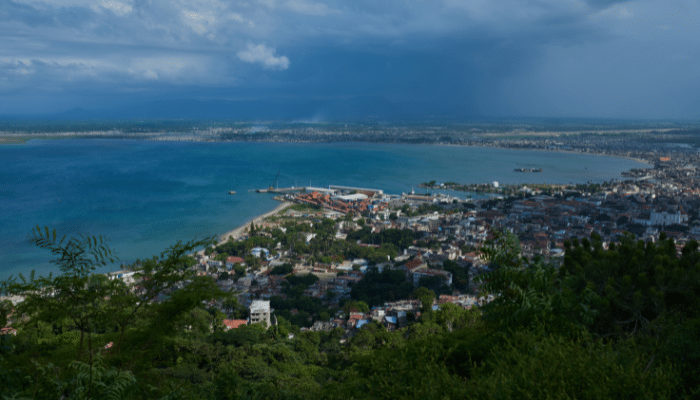
The port has two main quays situated at right angles to each other. Both have fenders and bollards along their lengths. The first one is for large cargo ships. The cement aprons are in viable condition and are broad enough for direct unloading onto the trucks.
Cap Terminal operates the container yard, owns port equipment, mainly cranes, and provides stevedoring services. The container yard has a capacity of 2000 TEU and has 20 plugs for reefers. There are private warehouses, too, for keeping rice and cement and a parking area for imported vehicles.
The RORO berth between Quay 2 and the cabotage berth is well constructed. Also, a dry port managed by Cap Terminal is under construction, just ten kilometres from the port, with a capacity of 3000 TEUs once completed.
The port receives three container ships weekly and two bulk carriers monthly. It also receives international shipments carrying second-hand goods from the Turks and Caicos and Florida.
Port of Jacmel
This is a small lightering port on the southern coast of Haiti. It is sheltered by a fringing reef to the southeast, is exposed, and sees heavy swell sometimes. A pilot is there to guide the ships, but the approach to the port might seem complicated to vessels with a shallow draft.
The port covers 1700 square metres and is nearest to the Dominican Republic. The port has a commercial cargo wharf accommodating sea-going ships since it has good fenders and bollards. The old jetty’s wooden planks are in poor condition and unfit for use.
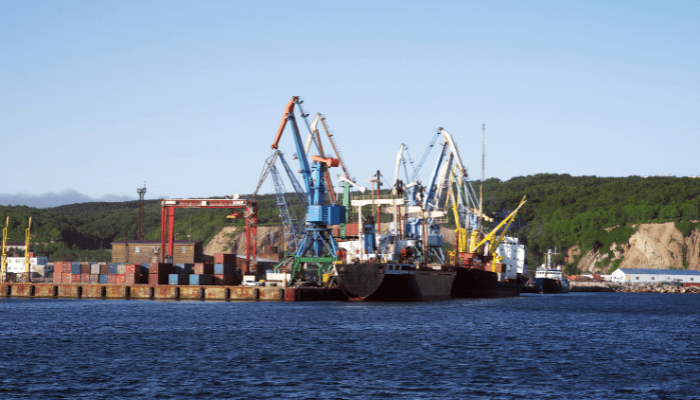
It does not handle large cargo volumes; only bulk carriers with cranes unload cement here.
Stern Ramp RORO ships sometimes discharge second-hand vehicles at this port, although there is no specific RORO berth here, and a small vessel might face difficulties due to the main berth’s height.
A cement ramp north of the main pier is utilised by local craft only since it is too shallow for RORO operations.
Though the port does not have much to offer, it has great potential given its location, which makes the southern regions of the islands readily accessible during emergencies.
The port has no cargo handling equipment and no stevedore company, though forklifts can be sourced locally. Ships here must self-discharge, and the pier can handle heavy trucks.
There is no covered storage space either, and cargo has to be shifted from the port premises shortly after it arrives. There are no large parking areas or transportation companies; however, trucks can be hired from the town or Port au Prince.
Port of Lafito
Lafito is a privately owned international container terminal covering 13 hectares. It is the only Panamax Port in Haiti and is owned by the GB Group, which also owns the nearby Industrial Free Zone, although it has yet to become operational. It also owns the dry port in Port-au-Prince.
Lafito Port was opened in 2015, and its equipment and infrastructure are in good condition, although the port itself is exposed due to the absence of a breakwater.
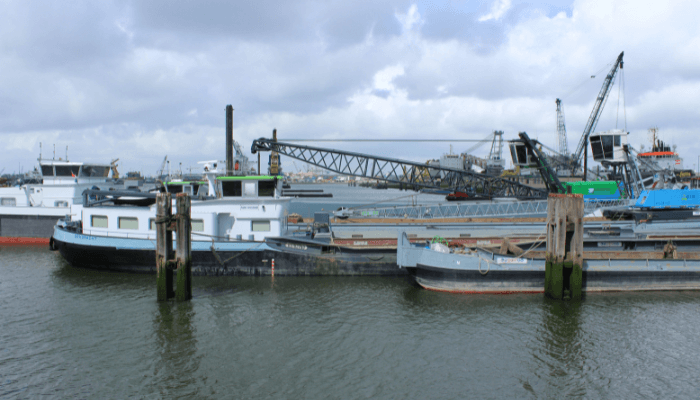
The port is oriented in the northwest-southeast direction and has a 450 m long berth, which extends to 500 m with the mooring dolphins. Though it is mainly a container handling facility, cement is handled at the northern part of the port, and ships are loaded with cement here.
The port has a container yard where containers are kept in different areas after being differentiated as empty, full and containing dangerous goods. The yard also has 30 reefer points.
Port of Saint-Marc
Earlier, a regular port of call for RORO ships from Miami, Saint-Marc, is now a cabbage port; however, customs are available, and imports like cement arrive here.
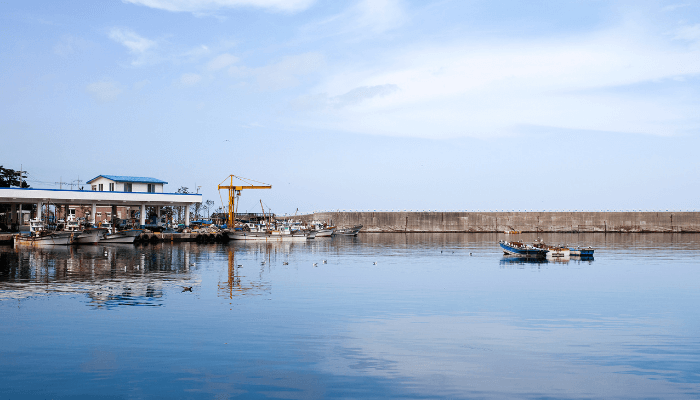
Vessel calls are not regular, and there is no port schedule. Port buildings are fine; however, the wharf needs maintenance since the area is small and can experience congestion. The port is also exposed, and witnesses swell occasionally.
The pier is oriented north-south and is 60 m long with a single bollard. Its wall is broken, and there are no fenders. It is used by RORO vessels.
The warehouse is small yet usable. The port has no parking areas, and the machinery is derelict.
Port of Les Cayes
Les Cayes is an import facility dealing with cement from the Dominican Republic. It receives vessels once a month.
Ships anchor offshore and discharge into small local boats with outboard motors. Entering the port can be hazardous due to the reef formations near its entrance channel.
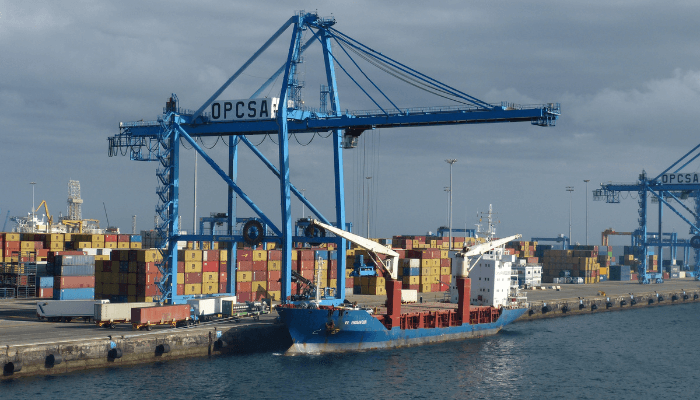
There are two piers to the east, and the first one can accommodate shallow draft vessels and tourist boats, while the second belongs to the Coast Guard and suffered some damage in the 2021 earthquake.
Port of Jeremie
This cabotage port does not comply with ISPS and is mainly a facility receiving imports of cement and rice, with vessel calls around every 15 days. It is not sheltered and exposed towards the east.
It has just one pier oriented to the east, measuring about 100 m; however, only 40 m of it can be used since a part of it was damaged by Hurricane Matthew. The southern part of the pier is the most used and has fenders along with two bollards on either side.
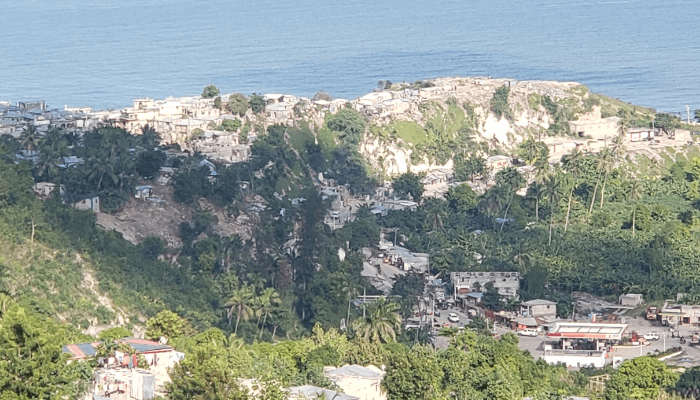
The port does not have any handling equipment or a formal stevedoring company. The Port Director organises stevedores if given a notice some days before the arrival of the vessel.
The port has a warehouse which can be rented. There is a hardstand area for trucks spanning 800 m2.
Ports of Gonaives
Gonaives Port and Sedren/Terminal Gonaives are managed by APN, but the latter is privately owned. The Port of Gonaives needs maintenance, while the Sedren/Terminal Gonaives is well-developed and was constructed to export the bauxite mined in this region.

The Port of Gonaives is small, with no storage areas. There are several wrecks, making the approach dangerous. The port is unsuitable for big ships but is used by small coastal traders, cargo boats and fishing boats.
Port of Carries
The Port of Carries is near the main road connecting Port-au-Prince and Carries. This facility serves La Gonave Island, and ferries and local wooden vessels are frequent visitors to the port. This facility does not see international maritime traffic.
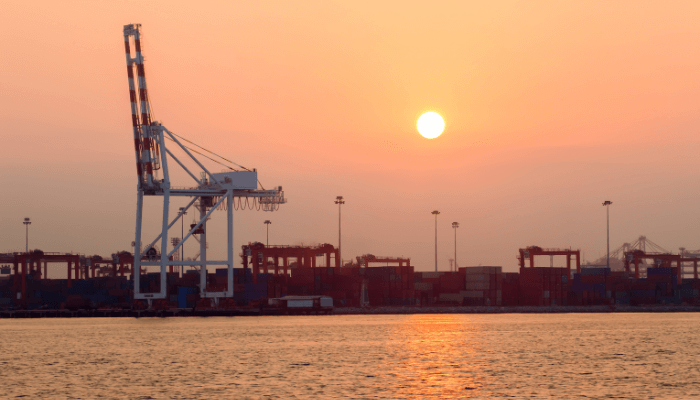
The main wharf functions as a ferry terminal and is constructed on piles. Hence, it has a weight limit that must be kept in mind. The port has no shore-based cargo handling equipment, and loading and unloading operations are done using manual power. There are no storage areas within the port premises.
Port of Terminal Abraham
This is a private facility owned by the Khawly family. It is mainly used for handling bulk like grain and cement, which constitute the primary import items. Wheat is turned to flour and bagged on the site, while animal fodder is also packed here. There is a RORO berth for coastal transporters.
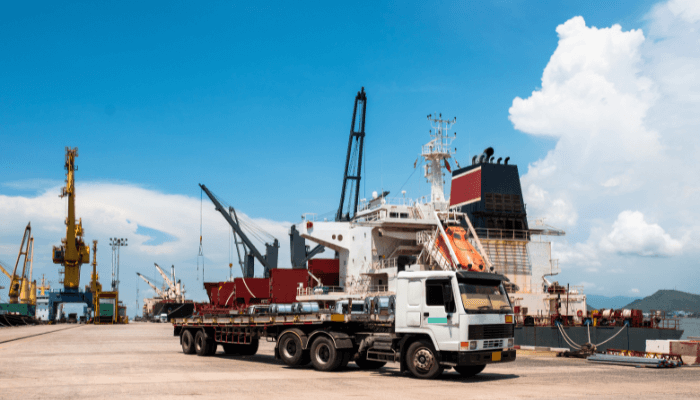
A finger pier extends north-northwest from the shore and is exposed to westerly winds. It is in usable condition and receives cargo barges carrying heavy fuels on its shoreward side. At the same time, bulk carriers dock on its seaward side, unloading into trucks which then discharge cargo into conveyors and hoppers to transfer the grain to the silos.
Several enterprises operate on this port, such as Cereal d ’Haiti, which stores and processes wheat into flour and SHAB, which mixes and packages animal feed. The port has two weighbridges and a large workforce. There are two warehouses which can store cement.
You might also like to read-
- 10 Major Ports Of Greece
- 10 Longest Fjords In The World
- 5 Major Ports In Cuba
- 10 Important Canals In The United States
- 10 Titanic Captain Facts You Might Not Know
Disclaimer :
The information contained in this website is for general information purposes only. While we endeavour to keep the information up to date and correct, we make no representations or warranties of any kind, express or implied, about the completeness, accuracy, reliability, suitability or availability with respect to the website or the information, products, services, or related graphics contained on the website for any purpose. Any reliance you place on such information is therefore strictly at your own risk.
In no event will we be liable for any loss or damage including without limitation, indirect or consequential loss or damage, or any loss or damage whatsoever arising from loss of data or profits arising out of, or in connection with, the use of this website.
Do you have info to share with us ? Suggest a correction
Disclaimer :
The information contained in this website is for general information purposes only. While we endeavour to keep the information up to date and correct, we make no representations or warranties of any kind, express or implied, about the completeness, accuracy, reliability, suitability or availability with respect to the website or the information, products, services, or related graphics contained on the website for any purpose. Any reliance you place on such information is therefore strictly at your own risk.
In no event will we be liable for any loss or damage including without limitation, indirect or consequential loss or damage, or any loss or damage whatsoever arising from loss of data or profits arising out of, or in connection with, the use of this website.

About Author
Zahra is an alumna of Miranda House, University of Delhi. She is an avid writer, possessing immaculate research and editing skills. Author of several academic papers, she has also worked as a freelance writer, producing many technical, creative and marketing pieces. A true aesthete at heart, she loves books a little more than anything else.
Latest Maritime Knowledge Articles You Would Like:
Daily Maritime News, Straight To Your Inbox
Sign Up To Get Daily Newsletters
Join over 60k+ people who read our daily newsletters
By subscribing, you agree to our Privacy Policy and may receive occasional deal communications; you can unsubscribe anytime.



